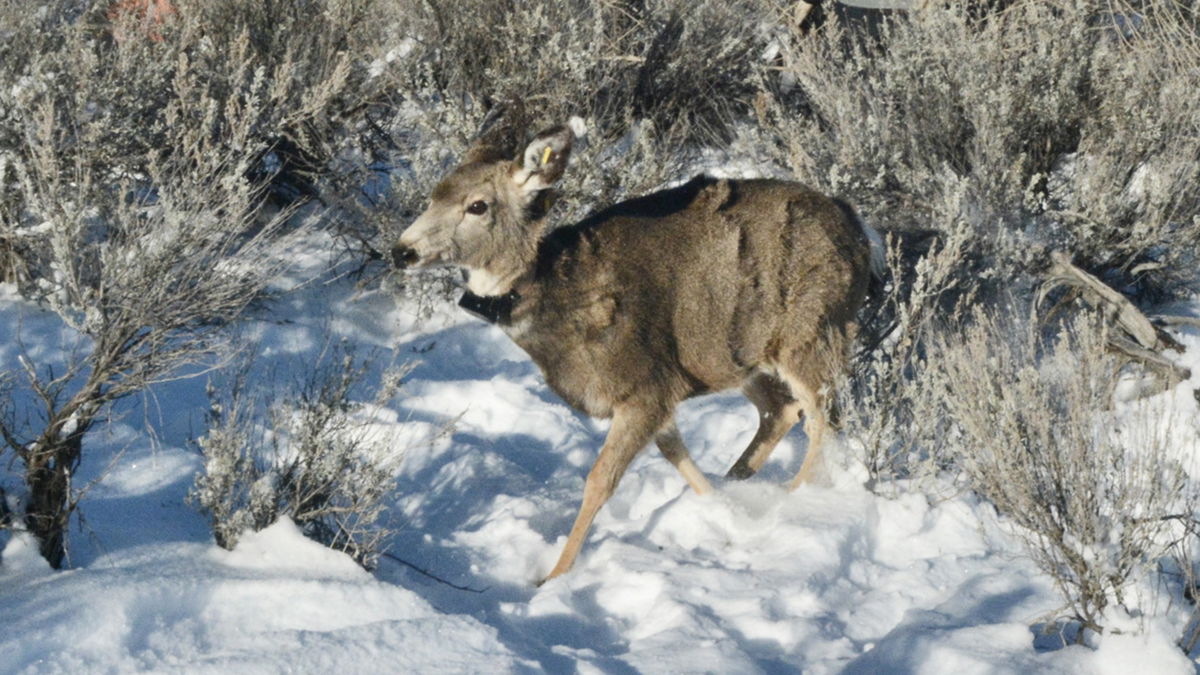Winter survival estimates for mule deer, elk remain above average and similar to 2020

IDAHO FALLS, Idaho (KIFI) - Statewide survival of collared mule deer fawns and elk calves was above average through the end of April.
Fish and Game biologists will continue monitoring through May, but traditionally less than 5% of the mortalities occur after April.
“In years with milder winters, like this one, we tend to see the number or mortalities drop off in May,” said Rick Ward, Deer and Elk Program Coordinator. “While we anticipate we will see some additional mortality by the end of the month, the statewide survival of mule deer fawns and elk calves is likely to end up being above average this year, barring an unusual event.”
Fish and Game crews and volunteers trap fawns and calves during winter and fit them with telemetry collars that allow biologists to track the young animals through their first winter and early spring.
Statewide, 77% of collared elk calves and 64% of mule deer fawns survived through the the end of April. That compares with 77% and 65% through the same period in 2020. The final numbers for 2020 (through the end of May) ended up above-average at 73 and 63%.
Fish and Game has been monitoring winter survival of fawns for 23 years. During that time, the average survival of fawns has been 57%. If, as anticipated, survival in 2021 continues to track similarly to 2020, it would mark two years of above-average survival for mule deer fawns statewide, which means mule deer herds are growing.
“Our herd composition surveys last fall were limited to eastern Idaho, but showed us encouraging fawn/doe ratios, and in some cases they were very high, which means we had a good crop of fawns going into the winter,” Ward said. “Fawn weights, which indicate how likely they are to survive winter, were high in many places in southern Idaho when we captured and collared fawns in December and January, and we have so far observed above-average survival. These are the conditions that lead to herd growth.”
Ward added that survival of fawns throughout the state is not uniform, and that it ranged from 50-85% in 2021, depending on where the fawns were collared.
Elk have not been trapped and collared for as long as mule deer, and elk calves typically survive at a higher rate than mule deer fawns. Since researchers began collaring elk calves in 2014-15, survival has ranged from a low of about 52% in 2016-17 to a high of 84% in 2014-15.
How the numbers compare to recent years
Through May 1, 64% of collared fawns and 77% of collared elk calves were still alive. Here’s how that compares to recent years. The final survival numbers (through May 31) for each year are included in parentheses.
- 2019-20: Deer 65% and elk 77%, (Final 63 and 73%)
- 2018-19: Deer 46% and elk 77% (Final 42 and 69%)
- 2017-18: Deer 61% and elk 72% (Final 57 and 66%)
- 2016-17: Deer 34% and elk 67% (Final 30 and 52%)






